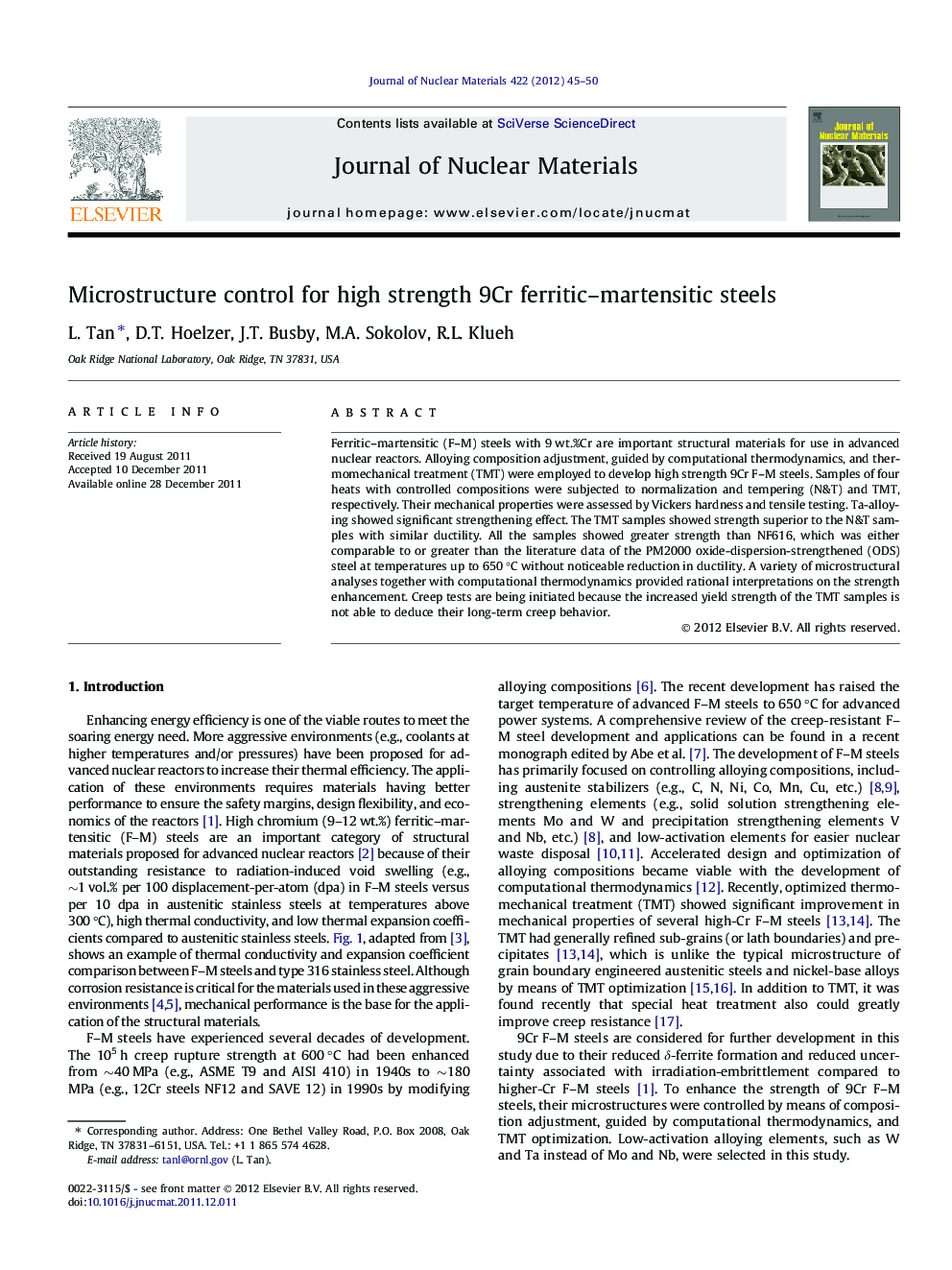| Article ID | Journal | Published Year | Pages | File Type |
|---|---|---|---|---|
| 1566377 | Journal of Nuclear Materials | 2012 | 6 Pages |
Abstract
Ferritic-martensitic (F-M) steels with 9 wt.%Cr are important structural materials for use in advanced nuclear reactors. Alloying composition adjustment, guided by computational thermodynamics, and thermomechanical treatment (TMT) were employed to develop high strength 9Cr F-M steels. Samples of four heats with controlled compositions were subjected to normalization and tempering (N&T) and TMT, respectively. Their mechanical properties were assessed by Vickers hardness and tensile testing. Ta-alloying showed significant strengthening effect. The TMT samples showed strength superior to the N&T samples with similar ductility. All the samples showed greater strength than NF616, which was either comparable to or greater than the literature data of the PM2000 oxide-dispersion-strengthened (ODS) steel at temperatures up to 650 °C without noticeable reduction in ductility. A variety of microstructural analyses together with computational thermodynamics provided rational interpretations on the strength enhancement. Creep tests are being initiated because the increased yield strength of the TMT samples is not able to deduce their long-term creep behavior.
Related Topics
Physical Sciences and Engineering
Energy
Nuclear Energy and Engineering
Authors
L. Tan, D.T. Hoelzer, J.T. Busby, M.A. Sokolov, R.L. Klueh,
